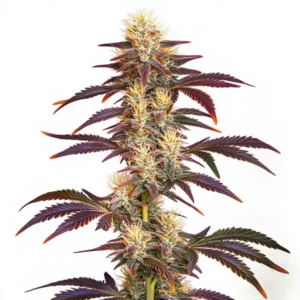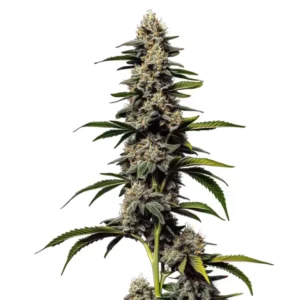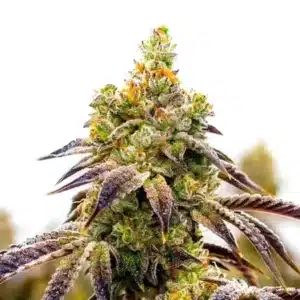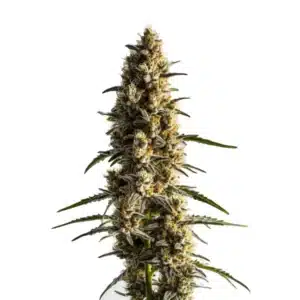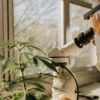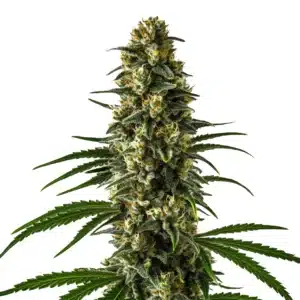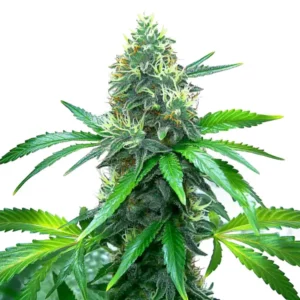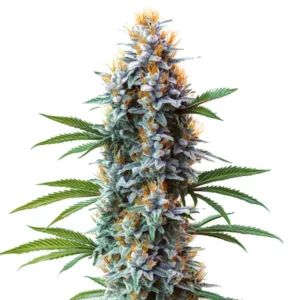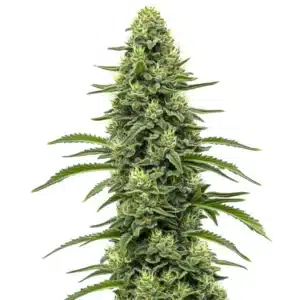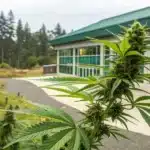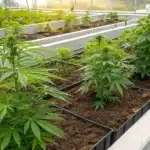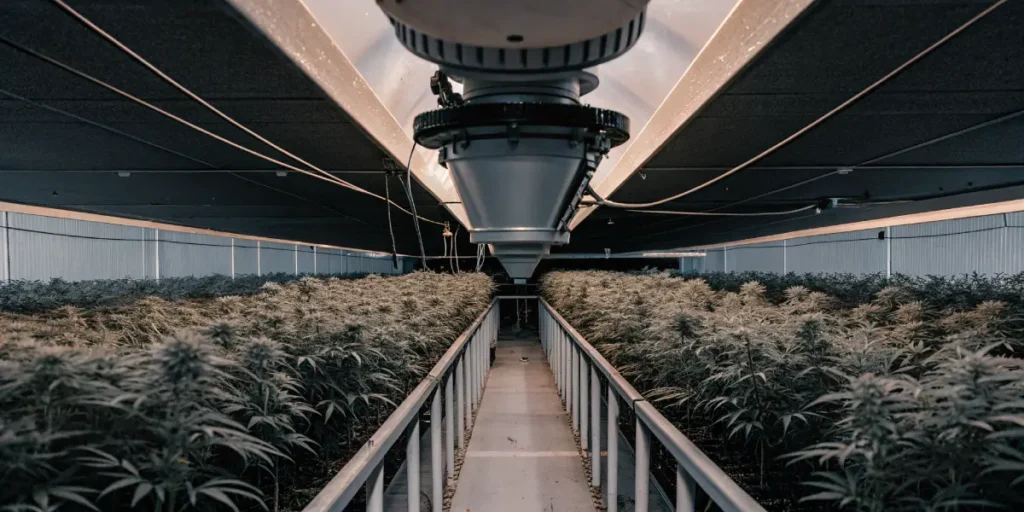
Advanced ROS Management for Indoor Cannabis Grows
Advanced ROS management for indoor cannabis grows is transforming the way cultivators approach indoor farming. This technology, known as the Robot Operating System (ROS), offers a flexible framework for writing robot software, which significantly enhances indoor cannabis operations. By leveraging the power of advanced ROS techniques for cannabis cultivation, growers can achieve more consistent results and optimize energy usage.
Implementing ROS in cannabis grow management involves integrating robotics and automation systems that work together to monitor and control various aspects of the growing environment. These systems can adjust lighting, humidity, and temperature with precision, allowing for optimal plant health. With ROS-based automation for cannabis grow rooms, you can ensure that your plants receive the perfect conditions for growth without constant manual input.
Recommended Strains
Blue Dream
|
|
THC | 17% - 24% (Medium) |
|
|
Type | Feminized |
|
|
Yield | High |
|
|
Phenotype | 50% Indica / 50% Sativa |
Grape Ape
|
|
THC | 15% - 25% (Medium) |
|
|
Type | Feminized |
|
|
Yield | High |
|
|
Phenotype | 90% Indica / 10% Sativa |
Growers often face challenges when managing large-scale indoor operations. Advanced ROS management for indoor cannabis grows simplifies these complexities, offering a streamlined approach that can be scaled according to your specific needs. This means less time troubleshooting and more time focusing on maximizing yield and quality. For example, by using ROS solutions for efficient indoor cannabis farming, cultivators can easily adjust their strategies based on real-time data.
Optimizing ROS for Indoor Cannabis Grows
Optimizing ROS for indoor cannabis grows requires a deep knowing of the specific needs of the cannabis plants you are cultivating. Different strains, such as those from Blimburn Seeds, will have unique requirements in terms of light cycles, nutrient needs, and environmental conditions. For instance, strains like Grape Ape may require different humidity levels compared to other varieties.
To make the most of ROS-based automation for cannabis grow rooms, it’s essential to tailor the system to the specific characteristics of your grow environment. This involves setting up sensors and actuators that can communicate with the ROS framework, allowing for precise control over the growing conditions. By doing so, you can maintain an ideal environment that supports robust plant growth and maximizes yield.
Advanced ROS techniques for cannabis cultivation not only involve optimizing environmental conditions but also require continuous adjustments based on plant feedback. Regularly monitoring plant responses to various stimuli allows growers to tweak their ROS setups, ensuring that each strain receives exactly what it needs. This dynamic approach leads to more resilient plants and a more efficient cultivation process overall.
The implementation of advanced ROS management for indoor cannabis grows also opens up possibilities for integrating predictive analytics. By analyzing past data, growers can anticipate potential issues before they arise and make preemptive adjustments. This level of foresight can significantly enhance operational efficiency and contribute to a more sustainable cultivation model.
Promos & Deals
Implementing ROS in Cannabis Grow Management
Implementing ROS in cannabis grow management involves several key steps. First, you need to set up a network of sensors that can monitor various environmental parameters such as temperature, humidity, and light levels. These sensors feed data into the ROS system, which then processes the information and makes adjustments as necessary.
Next, it’s crucial to integrate actuators that can carry out the necessary changes in the grow room. This might include adjusting the intensity and duration of lighting or altering the temperature to ensure optimal growth conditions. With advanced ROS management for indoor cannabis grows, these adjustments are made automatically, allowing for consistent and reliable plant care.
One of the significant advantages of implementing ROS in cannabis grow management is the ability to create a responsive growing environment. By programming the system to respond to real-time data, growers can quickly adapt to changing conditions, ensuring that the plants always have the best possible environment. This proactive management style reduces the margin for error and promotes more robust plant development.
Furthermore, ROS solutions for efficient indoor cannabis farming can be customized to include remote monitoring capabilities. This feature allows growers to keep an eye on their operations from anywhere, providing peace of mind and the ability to address issues as they arise. By staying connected to their grow rooms, cultivators can ensure optimal plant health and productivity at all times.
Real-Life Examples of ROS in Action
Many growers have successfully implemented advanced ROS techniques for cannabis cultivation to enhance their operations. For example, a grower using Blue Dream from Blimburn Seeds may employ ROS to automate watering schedules, ensuring plants receive the right amount of water at the right time.
Another real-life example involves using ROS for pest management. By integrating cameras and image recognition software, the system can detect signs of pest infestations early, allowing growers to take swift action. This proactive approach helps prevent damage to crops, ensuring healthy and robust plants.
In another case, advanced ROS management for indoor cannabis grows has been used to streamline nutrient delivery. By analyzing plant growth patterns and environmental data, ROS can fine-tune nutrient distribution to match each plant’s developmental stage. This targeted approach not only boosts yield but also reduces waste, making the cultivation process more sustainable.
Growers are also using ROS to maintain consistency in large-scale operations. By standardizing processes across multiple grow rooms, cultivators can ensure uniform quality and yield. This scalability is one of the key benefits of implementing ROS in cannabis grow management, enabling growers to expand their operations without sacrificing control or efficiency.
FAQs
What is ROS and how does it benefit cannabis cultivation?
ROS, or Robot Operating System, is a flexible framework for writing software that operates robotic systems. In the context of cannabis cultivation, ROS provides a way to automate and optimize various aspects of the grow environment, such as lighting, temperature, and humidity. This automation leads to more consistent growing conditions, which in turn improves plant health and yield.
The benefits of using ROS in cannabis cultivation are numerous. By automating routine tasks, growers can save time and reduce the risk of human error. Additionally, ROS-based systems can provide real-time data on plant health and environmental conditions, allowing for more informed decision-making and better overall management of the grow room.
Moreover, advanced ROS management for indoor cannabis grows facilitates the integration of innovative technologies like machine learning, which can further refine the automation process. By learning from previous cycles, the system can predict future needs and optimize resource allocation, leading to enhanced growth outcomes.
Another notable benefit is the increase in operational efficiency. With ROS solutions for efficient indoor cannabis farming, growers can streamline their processes, reduce labor costs, and minimize resource wastage. This efficiency not only boosts profitability but also contributes to more sustainable farming practices.
How can I start using ROS for my indoor cannabis grow?
Starting with ROS for your indoor cannabis grow involves setting up a network of sensors and actuators that can monitor and control your grow environment. You’ll need to install software that allows these devices to communicate with the ROS framework, enabling automation of tasks such as lighting and watering.
To get started, consider investing in a basic ROS setup and gradually adding more components as you become more comfortable with the system. Many growers find it helpful to start with a single aspect of their grow room, such as lighting, and expand from there. With time and experience, you’ll be able to fully optimize your grow environment using advanced ROS management for indoor cannabis grows.
One approach to ease the transition is to partner with experienced consultants in ROS-based automation for cannabis grow rooms. These experts can provide valuable insights and assist in setting up an efficient system tailored to your specific needs, helping you avoid common pitfalls and ensuring a smoother implementation process.
As you gain familiarity with the system, experimenting with different configurations can yield valuable insights. By adjusting parameters and observing the effects on plant growth, you can refine your setup to better meet the needs of your specific strains, ultimately leading to improved yields and plant quality.
Can ROS be customized for different cannabis strains?
Yes, ROS can be customized to meet the specific needs of different cannabis strains. Each strain may have unique requirements in terms of light, temperature, and nutrient needs. By setting up a tailored ROS-based system, you can ensure that each strain receives the optimal conditions for growth.
For instance, a strain like Grape Ape may thrive under different light cycles compared to Blue Dream. By adjusting the ROS system accordingly, you can create a personalized grow environment that maximizes the potential of each strain. This level of customization is one of the key advantages of implementing ROS in cannabis grow management.
Advanced ROS techniques for cannabis cultivation allow for the integration of strain-specific data into the automation process. By leveraging historical growth data and expert insights, growers can fine-tune their ROS setups to accommodate the unique characteristics of each strain, ensuring optimal results.
Furthermore, the scalability of ROS solutions for efficient indoor cannabis farming means that as new strains are introduced, the system can be easily adapted. This flexibility ensures that growers can continue to innovate and explore new cultivation possibilities without being constrained by their existing setup.
What challenges might I face when implementing ROS?
Implementing ROS in your cannabis grow room can come with challenges, such as the initial setup and integration of hardware components. Setting up sensors and actuators requires some technical knowledge, and ensuring they communicate effectively with the ROS framework can be complex.
However, these challenges can be overcome with patience and research. Many resources are available online to help you understand the nuances of ROS setup and integration. Additionally, starting small and gradually expanding your system can help manage the complexity and ensure a smooth implementation process.
Another potential challenge is the need for ongoing system maintenance and updates. As technology evolves, keeping your ROS framework up-to-date is crucial for maintaining its efficiency and effectiveness. Regularly reviewing and updating system components can help prevent issues and ensure optimal performance.
Despite these challenges, the benefits of advanced ROS management for indoor cannabis grows far outweigh the initial hurdles. By investing time and resources into a well-designed system, growers can achieve greater consistency, improved yields, and more efficient operations, ultimately enhancing their competitive edge in the market.
Is ROS suitable for small-scale indoor cannabis grows?
While ROS is often associated with large-scale operations, it can be an excellent tool for small-scale indoor cannabis grows as well. The flexibility of ROS allows for customization and scalability, making it suitable for growers of all sizes.
For small-scale operations, implementing ROS can provide the benefits of automation without the need for extensive manual intervention. Even with a smaller setup, you can achieve more consistent results and improve the overall efficiency of your grow room. This makes advanced ROS management for indoor cannabis grows a valuable option for growers at any scale.
Small-scale growers can particularly benefit from the cost savings associated with ROS-based automation for cannabis grow rooms. By reducing labor costs and minimizing resource wastage, even modest operations can enhance their profitability and sustainability.
Moreover, the simplicity of a small-scale setup allows for easier experimentation and refinement of the ROS system. This flexibility enables growers to quickly adapt to new insights and technologies, ensuring that they remain at the forefront of cultivation innovation and efficiency.



